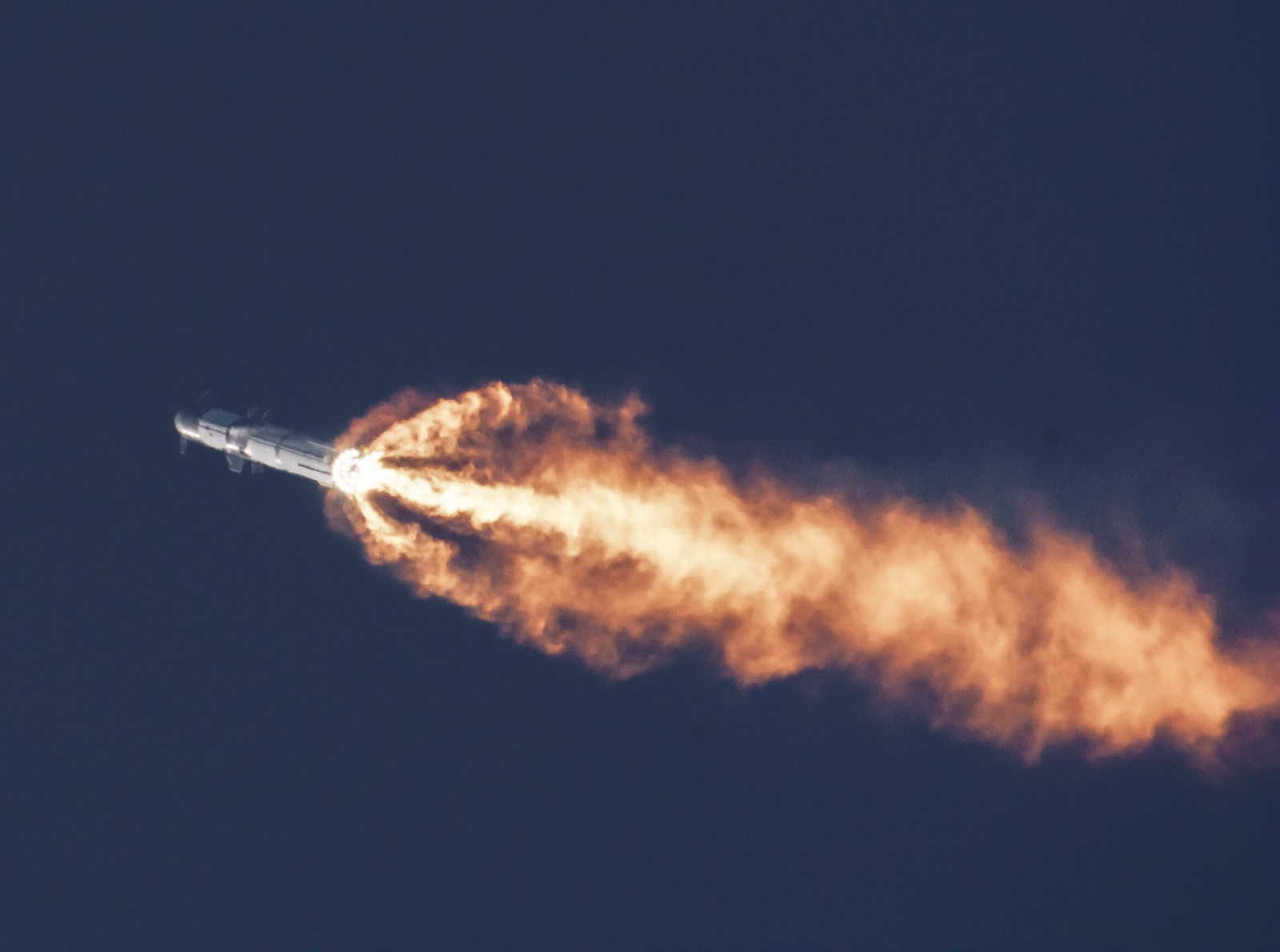Products You May Like
WASHINGTON — SpaceX Chief Executive Elon Musk said the first integrated test flight of his company’s Starship vehicle met his expectations despite a cascading series of engine failures and other malfunctions that eventually caused the rocket to lose control.
Musk, speaking in a subscriber-only chat April 29 on Twitter, the social media company he acquired last year, predicted that the company would be ready to make another launch attempt in about two months with a greater chance of reaching space.
“The outcome was roughly sort of what I expected and maybe slightly exceeded my expectations,” he said. Those expectations, he said, were that the vehicle would get clear of the pad and get “significant” data during the flight, including through maximum dynamic pressure or max-Q. “Overall, I actually feel like that was a great flight.”
Musk offered a recap of the flight, noting that problems began immediately at liftoff when 3 of the 33 Raptor engines in the vehicle’s Super Heavy booster either failed to start or aborted during startup. “Those engines did not explode, but the system didn’t think they were healthy enough to bring them to full thrust.”
He added that the 30 working engines was the minimum needed for liftoff, causing a distinct lean to the vehicle as it cleared the pad.
At T+27 seconds, a Raptor designated engine 19 lost communications at the same time that “some kind of energetic event” broke off part of the heat shield around that engine and three others. At that point there were “visible fires” coming from the aft end of the rocket, he said.
At T+62 seconds, there was additional heat shield damage around another Raptor, engine 30, although that engine continued to operate. At T+85 seconds, “things really hit the fan,” he said, with the loss of communication with another engine. “Roughly from this point onwards, we lose thrust vector control of the rocket,” he said, meaning it could no longer steer.
It was not clear what caused the engine failures, but Musk said it did not appear to be damage from the “rock tornado” of debris from the concrete pad created by the thrust of the engines at liftoff. “Weirdly, we do not see evidence of the rock tornado actually damaging engines or heat shields in a material way,” he said. “It may have, but we have not yet seen evidence of that.”
SpaceX made no attempt to separate the Starship upper stage from the Super Heavy vehicle as it tumbled in later stages of flight. Musk said while controllers initiated the flight termination system, it took much longer than expected, about 40 seconds, for explosives to rupture the vehicle’s tanks.
Requalifying that flight termination system will be the long-lead item for the next launch, he predicted, with the next vehicle and a repaired pad likely ready in six to eight weeks. “Hopefully, we’ll be ready to fly again in a couple months.”
Musk played down the damage to the pad itself, including concrete debris scattered over nearly 400 acres around the pad and a plume that deposited a sand-like material more than 10 kilometers away. “The debris was basically sand and rocks,” he said, “but we don’t want to do that again.”
Changed to the pad include placing a water-jacketed “steel sandwich” below the launch mount. “You have what’s basically a massive super strong steel showerhead pointing up,” he said, with that water deluge system mitigating dust and debris.
SpaceX had been working on that device before the launch but it was not ready in time. “If we had expected to dig a hole, we would not have flown,” Musk said. Data from the static fire test in February, when 31 of 33 Raptor engines fired at 50% of their rated thrust, caused “fairly modest erosion” of Fondag, the heavy-duty concrete used on the pad. “We thought it would be fine for one launch.”
He said SpaceX will also be replacing damaged tanks in the tank farm at the pad that were already set to be swapped out with vacuum-jacketed versions. The launch tower itself suffered no “meaningful” damage, he added.
The next launch will use a Super Heavy booster called Booster 9, but he said the company had not decided which of the Starship upper stages will fly. “The engines on Booster 9, which is next, are much newer and more consistent, and with significant reliability improvements,” he said, along with improved shielding. “I think we’ll see a much more robust engine situation with Booster 9.”
He was optimistic that the second launch will get at least through stage separation. “Our goal for the next flight is make it to staging and hopefully succeed in staging and get to orbit,” he said. “I think we’ve got a decent shot of getting to orbit on the next flight.”
He said later in the nearly hour-long conversation that he gave a “better than 50% chance of reaching orbit” on the next launch. That launch, though, will be a repeat of the flight profile of the original flight, a “nearly orbital” trajectory that would have Starship splash down off the coast of Hawaii 90 minutes after liftoff, short of one complete orbit.
Musk estimated SpaceX will attempt four to five Starship launches this year. “I would be surprised if we exit this year without getting to orbit,” he said, giving the company an “80%-plus probability” of doing so, increasing to nearly 100% within 12 months.
He said the company will spend about $2 billion this year on Starship, which he argued the company can support without raising outside funding.
“Once again, excitement is guaranteed,” Musk said of the next launch. “Success is not.”
